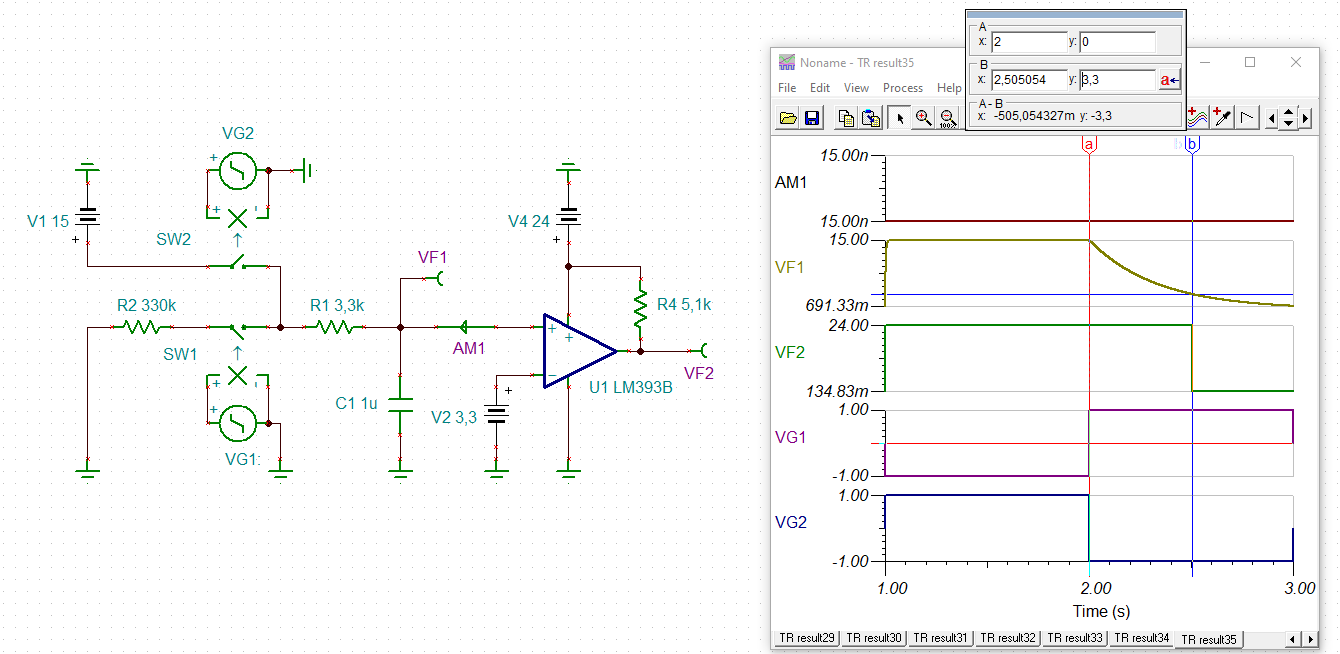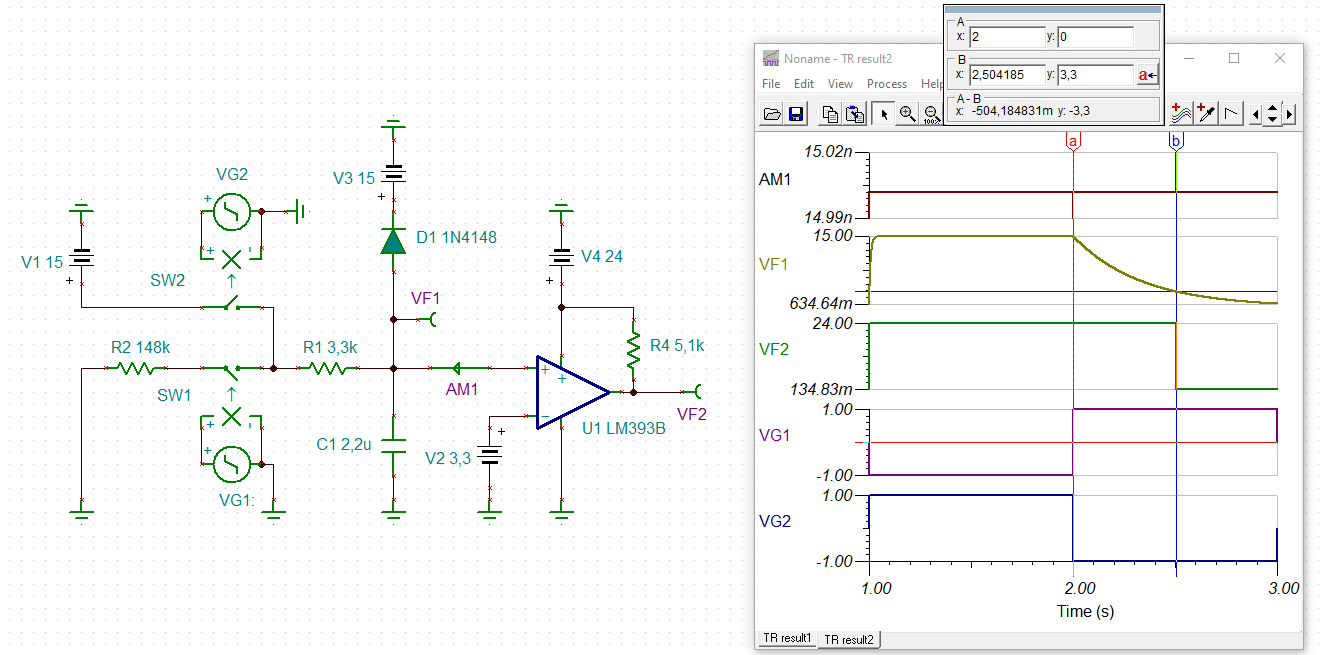Dear Expert,
Good day!
Our customer designed a comparator + RC delay circuit as shown in attachment:
(I have eliminated few details for clarity)
Basically the cap charges during one of the MUX selection and discharges during the other selection.
Depending on the potential across the capacitor, the out put of the LM393 comparator goes to 24V or 0V.
The RC was designed such that it takes 0.5 sec for the capacitor to discharge from 15V to 3.3V. Simulation results match.
However, once this circuit was implemented in PCB, even with extreme values of POT, we couldn’t reach the designed delay.
In fact, the supplier had to increase the series resistor to 240k to get a value close to 0.5 sec!
Do you know why this happens? Could you let me know how to fix the issue?
Best regards,
Leon.liu






